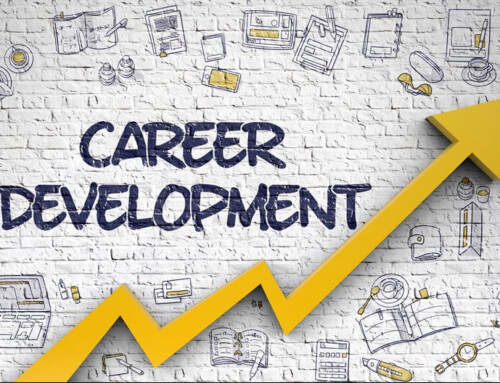An article in Chief Executive proposed an interesting and thought-provoking scenario for business leaders: trading in best practices for “next practices.” (1) In other words, do not continue to blindly apply well-documented, well-established and rigid guidelines that do not allow flexibility and adaptability to future scenarios. Instead, boldly break away from the constraints of these best practices and embrace next practices that provide room to grow and change as the business landscape evolves.
Contrary to the way this advice may sound at first, it does not require throwing away every single aspect of best practices. Industry standards will always exist in one form or another, and these guidelines still offer a certain degree of value. Effectively adopting next practices involves taking the valuable aspects of best practices and fusing them with future standards to create evidence-based guidelines rounded out by the spark of innovation.
So, how can you challenge the status quo and achieve a perfect balance of old and new practices as a business leader?
BE WILLING TO TAKE A STAND WITHOUT ALLIES
There will always be organizations who nervously shy away from implementing new ways of operating. And even fairly open-minded companies often take their time trying different strategies. This reality makes it probable that, should leadership at your business choose to adopt next practices, you must be willing to take a stand of advanced strategies often without the support of allies.
In terms of competitors, this is obviously a good thing. By leading the charge and moving in the direction of evolution rather than remaining “stuck” on best practices, you gain a competitive advantage. Rapid advances in technology have created change that seems to move at lightning speed these days. It is entirely possible that tools and strategies that worked a year ago may fail today.
But regardless of the advantage emerging practices provide you over competitors, using new methodologies can still feel uncomfortable and somewhat intimidating when your organization is one of few in your industry taking this initiative.
Case Study: Apple
Apple is known for stepping outside of the box. Regardless of what sometimes seems like a tidal wave of user pushback, leadership continues to forge a bold path towards technological innovation. The introduction of the Apple Vision Pro, led by Chief Executive Officer (CEO) Tim Cook, is a perfect example. Cook championed this device, which utilizes spatial computing to enhance enterprise productivity and user interaction. The price point is relatively high at $3,500. However, Cook recognized the considerable benefits offered by the Apple Vision Pro, including the ability for teams to collaborate on 3D designs, customize workspaces through spatial computing and give employees specialized training. (2)
There is a certain level of risk Cook is taking with the launch of a product that may surpass the budget of some potential customers, and with significant production costs as well. But Cook has the vision to recognize how valuable the Apple Vision Pro could become to the company, and he’s brave enough to back up his conviction with action. Cook’s stance demonstrates how following next practices requires rethinking established processes and being willing to take calculated risks to stay ahead of market trends.
PRIORITIZE ADAPTABILITY AND FUTURE-READINESS OVER STATIC, TRADITIONAL APPROACHES
Sticking with the status quo is the easy thing to do. You are less likely to encounter opposition, and the risk factor tends to be lower. Unfortunately, taking the “safe” route by applying only sensible practices can also result in your organization repeating cycles that lead to nowhere, because the methodology behind the practices no longer works.
Alternatively, by taking an adaptable and future-focused approach to running your business, you’ll land squarely at the front of the pack. In addition to the advantage that leading the pack gives your company, it also offers a clear, unobstructed view of your industry’s future – and how to prepare for the changes coming your way.
Case Study: HubSpot
HubSpot CEO Yamini Rangan, Co-Founder and Chief Technology Officer (CTO) Dharmesh Shah and Executive Vice President (EVP) of Products Andy Pitre ushered in the company’s enthusiastic adoption of the artificial intelligence (AI) movement with HubSpot AI. This set of AI-powered products supports customer-facing teams, helping them enhance productivity and better meet changing customer expectations. (3)
Rather than resisting the momentum of AI, these business leaders recognized its inevitable future as a fixture in how companies service customers – and they leveraged it by giving AI a dedicated suite of products. By keeping their focus firmly on the future, HubSpot leadership embraced this innovative technology to stay competitive in markets undergoing rapid changes.
CREATE FLEXIBLE, ADAPTIVE ORGANIZATIONAL STRUCTURES WITH THE ABILITY TO QUICKLY RESPOND TO NEW OPPORTUNITIES AND CHALLENGES
The day of the unyielding, rigid organizational structure has come and gone. Regardless of the industry in which your business operates, change is now a constant factor. When a challenge or opportunity arises, your company must be able to address it without faltering. The key to achieving this lofty goal is keeping your organizational structure flexible and adaptive.
To be clear, this does not entail frequent fluctuations in job titles, department responsibilities or “right-sizing.” What it does entail is making small changes to better suit new opportunities and challenges. So-called minor tweaks can make a major difference in how well your business handles bumps in the road and maximizes opportunities.
Get together with fellow members of the leadership team to design an organizational structure made to respond seamlessly to new developments in the industry. Brainstorm various scenarios that regularly affect your market and come up with flexible solutions to each one. Although you may not wind up using all of them, or even many of them, you should still have them at your disposal. After all, you might be able to use aspects of one or two of them to craft a better solution for a situation that arises in the future.
KEEP NEW TECHNOLOGY FRONT AND CENTER
When it comes to widespread adoption, AI has made leaps and bounds in just a few short years. Technology that was once the stuff of science fiction has quickly become a requirement of the job for many. These organizations have been among the first to integrate AI into their offerings:
- Amazon current Founder and Executive Chair, and former CEO, Jeff Bezos handed the reigns to Director of Global Partnerships and Business Development Mobeen Khan, who led the integration of AI in procurement processes to enhance efficiency and responsiveness. (4)
- Google restructured to integrate AI initiatives and foster faster innovation, merging teams like DeepMind and Google Brain, under CEO Sundar Pichai’s leadership. (5)
- Under the leadership of Co-Founder and CEO Patrick Collision, Stripe introduced AI-powered payment solutions, major billing upgrades, and expanded support for diverse payment methods. This shift focuses on user experience and integration with various platforms, redefining how businesses handle payments online. (6)
- Clara Shih, CEO of Salesforce AI, led the company’s initiative to enhance its Lightning user interface and integrated AI tools – streamlining customer interactions, making processes more efficient and improving user experience. (7)
BREAK THE RULES TO MAKE NEW AND BETTER ONES
Savvy business leaders recognize that the time has come to break the rules to make the next set of standards bigger, better, more advanced and flexible. It is an ongoing cycle of transformation and improvement that shows no signs of stopping.
It’s a good thing, because the evolution of optimal practices puts the power squarely in your hands. You and your colleagues get to design your business practices as they apply to your industry, market and the future of both. You would be hard pressed to find a more empowering scenario.
For more information about planning a corporate meeting to formulate next practices, let Gavel International show you how outsourcing can streamline your process.
This article was last updated on May 27, 2025
- Fresh, New, and Exciting Interactive Activities to Keep Corporate Event Attendees Engaged - October 20, 2025
- What Real Workplace Flexibility Looks Like – and 8 Tips to Achieve It - September 22, 2025
- Is Your Company’s Career Development Plan Really Working? - August 18, 2025






